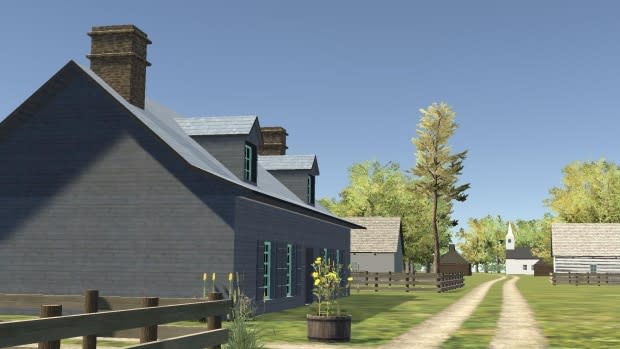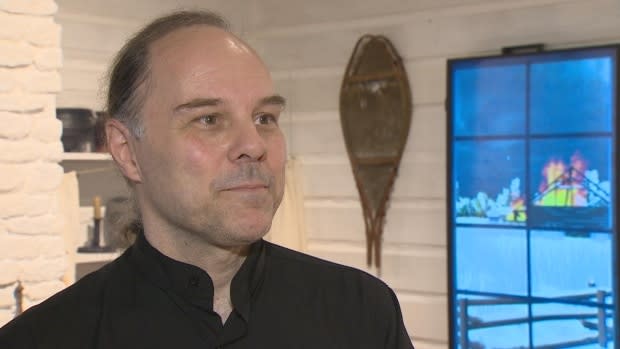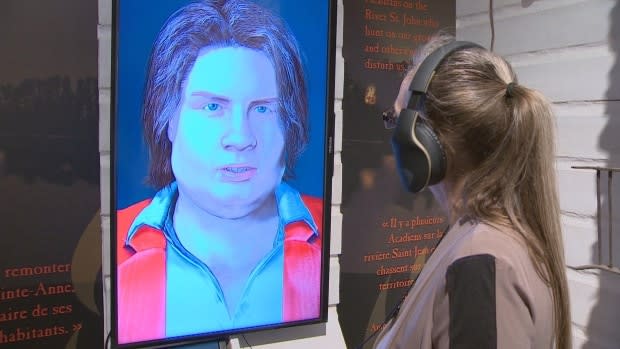Museum uses virtual reality to tell Pointe-Sainte-Anne story before and after massacre

A new exhibit at the Fredericton Region Museum gives patrons a chance to see what an 18th-century Acadian settlement on the St. John River may have looked like.
The virtual reality exhibit showcases Pointe-Sainte-Anne, the former Acadian settlement in what is now downtown Fredericton.
Visitors put on bilingual virtual reality Oculus headsets to see a short video about the history of the settlement, and there are touch screens showcasing eye-witness testimony about the destruction of the community 260 years ago.
The video is rendered in 360 degrees, allowing visitors to view the local world in all directions.

Scenes include the settlement from its inception in 1692 all the way to the aftermath of its burning.
Alan Edwards, the digital media director of the project, said he's always been interested in history, and the exhibit allowed him to combine his love of history and graphics.
"It's like I have a time machine," said Edwards.
"I enjoy that part of it. I could've been a historian because I really do enjoy digging into history and learning what happened in days gone by."
A brutal massacre
Eighty-six people lived in the small Acadian settlement, according to a 1739 census.
In 1759, the settlement was destroyed by the British during the Expulsion of the Acadians.
A reconnaissance campaign in the fall of 1758 temporarily convinced the British the community was small and not worth capturing, but by February that had changed.

Colonial Lt. Moses Hazen travelled to the settlement with a troop of New England Rangers.
When he arrived, his forces burned 147 buildings and killed numerous residents in a massacre considered to be particularly brutal for the Expulsion.
Farmer Joseph Godin would later tell his story to a man gathering information about the incident for the king of France.
"They carried the rage to massacre his daughter Nastazie, wife of Eustache Paré, crushed her two sons' heads with rifle butts and a son of Michel's," the unnamed correspondent wrote of Godin's experience.
Mitra Bahktiar, one of the graphic designers who worked on the project, said she didn't know about the destruction of Pointe-Sainte-Anne until she started working on the exhibit.
"I knew some problems between French and English people but I couldn't understand … and when we wanted to make this project I learned [the] story behind all this."
Labour of love
Edwards said the work on the exhibit took hundreds of hours, and is still going on, since he hopes to update some of the 3D models used.
The team was made up of Edwards, Bahktiar and two students, and work had to be done within a year. Not an easy task, said Edwards.
"The deadline was ambitious," said Edwards.

"We had to work much harder, as a small team, to make things happen and to meet that deadline."
The exhibit has only been open for a little over a week, but Bahktiar said the team has already received lots of praise.
"It was amazing, I am really happy about that," said Bahktiar
"I remember one lady with her teenage son came and said 'I am so amazed about what he saw.'"



